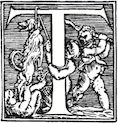
he Fabric of the Human Body makes it possible to truly experience this landmark work of science, history and culture for the first time, removing the roadblock of Vesalius’ especially difficult Latin and complex referencing. It provides some unique features for modern readers.
- Incorporates the 1543 and 1555 editions of the Fabrica for the first time, with added notes regarding Vesalius’ 1546 Epistle on the China Root, the 1538 Tabulae sex, and the 1539 Venesection Letter.
- Annotations by translator Daniel H. Garrison clarify Vesalius’ text and identify Vesalius’ relation to the ancient authorities on whom humanistic medicine based its anatomical knowledge. They include text citations and fresh translations of passages from Galen, Cicero, Aristotle, Plato and the Hippocratics, among many others, as well as notes on Vesalius’ unacknowledged sources.
- Introduces and integrates into the annotations many of the newly discovered notes in Vesalius’ own handwriting for a third edition, courtesy of renowned medical historian Vivian Nutton and pathologist Gerard Vogrincic.
- Modern medical terminology is clearly aligned with 16th-century descriptions for the first time.
- The translated language mirrors the color, wit and complexity of Vesalius’ own language. This is essential in that rhetoric and style are crucial elements of the Fabrica.
- Fresh design maps out Vesalius’ marginalia, pagination and other facets of the Fabrica in a user-friendly fashion.
- The best of 21st-century typography, including colors, makes it easy to follow Vesalius’ references.
- Digitally optimizes Vesalius’ 273 original woodcut illustrations with high-resolution scans.
- Published with care on high-quality material.
- New typeface designed in tribute to the original Basel Antiqua font.
- Includes new introductory essays shedding light on Vesalius, the Fabrica and their significance.
